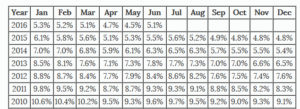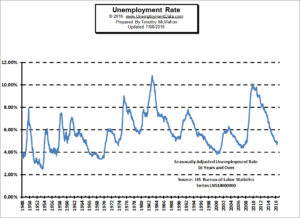
In an interesting twist, although total non-farm payroll employment increased by 287,000 in June, the unemployment rate also rose to 4.9 percent from 4.7%.
How can employment and unemployment increase at the same time you may ask??? Read More …
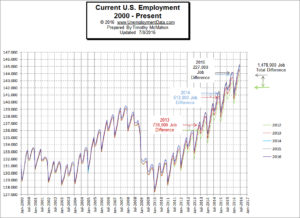
According to David Stockman :
“… at the February 2008 peak prior to the crisis, the BLS reported 138.5 million nonfarm payroll jobs compared to 143.9 million in April 2016. The net gain is thus only 5.6 million, and it means nearly 9 million or 61% of the 14 million new jobs … are not “new” at all; they were born-again jobs, and even then they consist of lower paying and lesser quality jobs than the ones obliterated during the crash and so-called Great Recession.
For instance, there has been a loss of 2.3 million goods-producing jobs in manufacturing, mining/energy and construction, paying an average of$58,000 per year; and these have been swapped for 1.9 million jobs in leisure and hospitality paying less than $20,000 per year.” Read More …
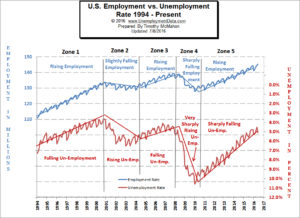
We can see that in zone 5 the official unemployment rate stopped tracking the employment rate and decreased much more sharply than the employment rate justifies. This is primarily due to a falling labor force participation rate. Read More …
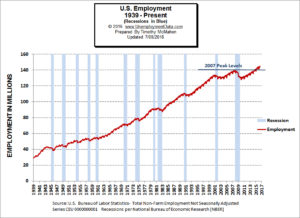
Unadjusted Unemployment Rates
Read More ….
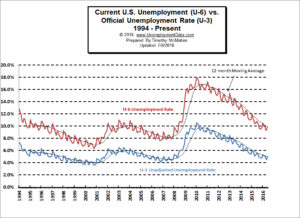
Current U-6 Unemployment Rate for June 2016 is: 9.9%
The Gallup equivalent to U-6 (they call the “Underemployment Rate”) is: 13.4%
Read More ….
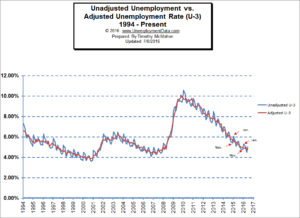
Unadjusted vs. Seasonally Adjusted Unemployment Rate
The Unadjusted U-3 was 4.5% in May down from 4.7% in April and the Seasonally Adjusted U-3 was 4.7% down from 5.0%. More …
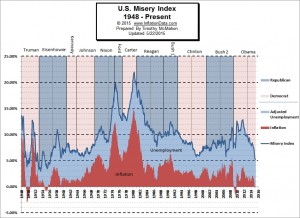
What is the Misery Index?
The misery index helps determine how the average citizen is doing economically and it is calculated by simply adding the Annual inflation rate to the Seasonally Adjusted unemployment rate. The misery index as of June 2016 (based on the most recent official government data for the 12 months ending in May) is at 5.72%.
Seasonally Adjusted Unemployment
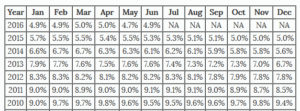
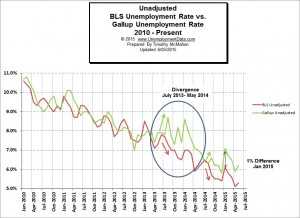
Whose Unemployment Numbers are Right?
Although up until recently the difference wasn’t massive it does appear that the BLS data is biased to the low side compared to the independently surveyed Gallup numbers. Like the previous two summers the gap between the BLS and the Gallup numbers closed for June 2016 with the BLS Unadjusted U-3 coming in at 5.1% and the Gallup numbers coming is at 5.4%. More …
Current U-6 Unemployment Rate is 9.9% (BLS) or 13.4% (Gallup)

